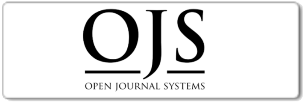OPTIMALISASI KADER POSYANDU DALAM UPAYA MENURUNKAN STUNTING DENGAN PEMBERIAN SUPLEMENTASI DAN EDUKASI GIZI DI DESA SUMBANG
Abstract
Improving stunting decrease in media is a government objective, with an aim of lowering stunting to 14% by 2024. Anemia is a risk factor for stunting, especially during pregnancy. Anemia is a problem in which the body does not have enough blood. Iron, folic acid, and vitamin B12 are the micronutrients required by the body to make red blood cells. Pregnant women are expected to take anemia supplements. It is predicted that supplementation and nutrition education for pregnant and breastfeeding women may help to address the problem of stunting in children in Indonesia, particularly in Sumbang Village, Banyumas district, which is a stunting locus.
The Small Group Discussion approach is used to educate the community in Sumbang Village on the need of preventing anemia with a balanced food intake as well as the relevance of blood replenishment. Eight Posyandu cadres have been trained to teach expecting mothers about the necessity of taking blood supplements to prevent pregnancy anemia and nutrition education. Pregnant women are given knowledge questionnaires before and after education to measure their level of knowledge. As a framework guide for maximizing education, the media book modules, pamphlets, and presentations are offered. Dedication was followed by a total of eight posyandu cadres aged 28-50, and those cadres had an excellent post-education knowledge category of 88.89%.
References
[2] A. Anita, “Faktor Penyakit Infeksi, Penggunaan Obat dan Gizi Ibu Hamil terhadap Terjadinya Kelainan Kongenital pada Bayi Baru Lahir,” J. Kesehat., vol. 8, no. 1, p. 120, 2017, doi: 10.26630/jk.v8i1.415.
[3] A. Ummah et al., “Profil Penggunaan Obat Pada Ibu Hamil Dan Menyusui Di Wilayah Surabaya,” J. Farm. KomunitasVol, vol. 5, no. 1, pp. 10–17, 2018.
[4] Rokhamah and Sayuti, “Pemberian Pendidikan Kesehatan Dengan Model Small Group Discussion (SDG) Dalam Upaya Meningkatkan Pengetahuan Ibu Di Sekolah Orang Tua Hebat (SOTH) Di BKB Harapan Kita 2 Desa Sumberejo Kota Batu,” J. Biomed Sci., vol. 11, no. 1, pp. 14–21, 2023.
[5] D. Supriyanto, “Penerapan Model Pembelajaran small Group Discussion terhadap Hasil Belajar Kognitif Siswa Pada Materi Dunia Tumbuhan dan Dunia Hewan,” Pros. Semin. Nas. Pendidik., vol. 2, no. 1, pp. 298–305, 2017.
[6] E. M. Afrilia and H. Sari, “Hubungan Metode Penyuluhan Small Group Discussion (Sgd) Dengan Tingkat Pengetahuan Anemia Pada Ibu Hamil Di Rumah Bersalin Gebang Medika Kota Tangerang,” J. JKFT Univ. Muhammadiyah Tangerang, vol. 3, pp. 79–85, 2018.
[7] A. P. Hastuti, T. Sukartini, Y. S. Arief, N. Nursalam, Indari, and D. N. Suprawoto, Factors Influencing Nutritional Practice of Mothers with Stunted Children, vol. 2. Atlantis Press International BV, 2023.
[8] G. C. Di Renzo, F. Spano, I. Giardina, E. Brillo, G. Clerici, and L. C. Roura, “Iron Deficiency Anemia in Pregnancy,” Women’s Heal., vol. 11, no. 6, pp. 891–900, Nov. 2015, doi: 10.2217/whe.15.35.
[9] V. Vernissa, R. Andrajati, and S. Supardi, “Efektivitas Leaflet dan Konseling terhadap Kepatuhan Minum Tablet Besi dan Kadar Hemoglobin Ibu Hamil dengan Anemia di Puskesmas di Kabupaten Bogor,” Media Penelit. dan Pengemb. Kesehat., vol. 27, no. 4, pp. 229–236, 2017, doi: 10.22435/mpk.v27i4.6628.229-236.
[10] Baharini, “Hubungan Efek Samping Suplemen Zat Besi (Fe) dengan Kepatuhan Ibu Hamil di Puskesmas Sumbersari Kabupaten Jember,” e-Jurnal Pustaka Kesehat., vol. 5, no. 1, pp. 35–39, 2017.
[11] H. Palupi, Y. Renowening, H. Mahmudah, and I. S. Hartono, “Pengetahuan Ibu Tentang Gizi Berhubungan Dengan Kejadian Stunting Pada Balita Umur 24-36 Bulan,” J. Kesehat. Mahardika, vol. 10, no. 1, pp. 1–6, 2023, doi: 10.54867/jkm.v10i1.145.
[12] J. Widiyanto and F. S. Laia, “Mother Knowledge of Nutrition and Effect on Nutritional Status of Children in Community Health Center,” Hosp. Manag. Stud. J. (Homes J., vol. 2, no. 1, pp. 2746–8798, 2021.

This work is licensed under a Creative Commons Attribution 4.0 International License.







